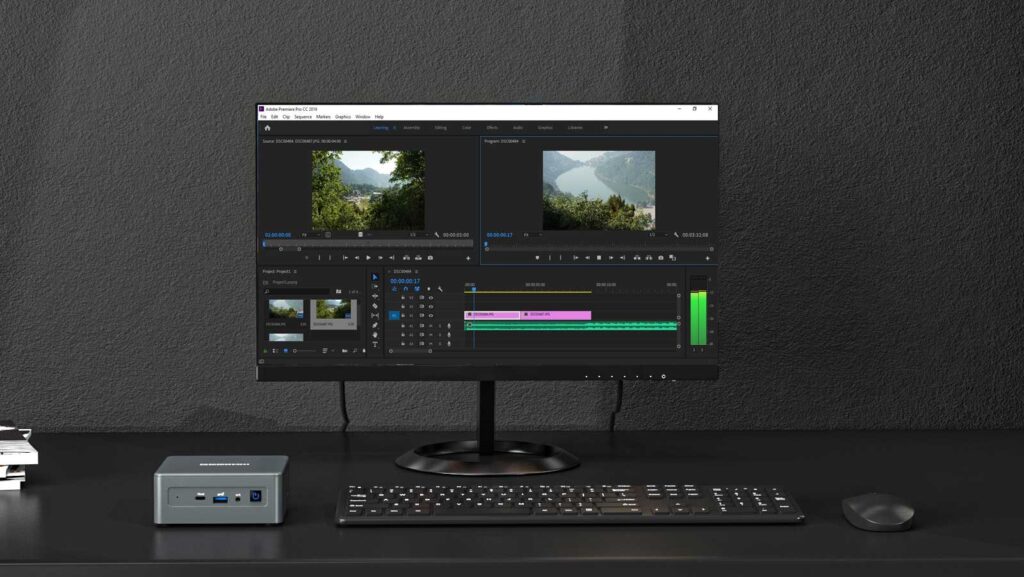In recent years, mini PCs have gained significant popularity due to their compact size, energy efficiency, and surprising performance capabilities. Whether you’re a professional seeking a reliable workstation, a casual user wanting a clutter-free home computer, or a tech enthusiast intrigued by small form factors, selecting the right mini PC can be transformative. However, with many options available on the market, making an informed choice requires understanding key factors that differentiate one mini PC from another. In this detailed guide, we will explore the essential considerations to help you pick the ideal mini PC for your needs.
1. Understand the Definition and Advantages of a Mini PC
A mini PC, sometimes referred to as a small form factor (SFF) PC, is a fully functional computer condensed into a much smaller chassis compared to traditional desktops. Typical dimensions range from the size of a thick textbook to a compact external hard drive. Despite their size, modern mini PCs can handle a variety of tasks including office productivity, media consumption, light gaming, and sometimes even heavy workloads.
Advantages of mini PCs include:
- Space-saving design: Ideal for tight workspaces or minimalist setups.
- Energy efficiency: Generally consume less power, reducing electricity bills.
- Portability: Easy to move or carry, suitable for mobile offices or presentations.
- Quiet operation: Many models use passive cooling or quiet fans, making them great for noise-sensitive environments.
2. Determine Your Usage Scenario
Before diving into specifications, clarify how you intend to use the mini PC. This step helps streamline your options to models best suited to your workload.
- Office Productivity & Web Browsing: For tasks like word processing, spreadsheets, email, and streaming, entry-level mini PCs with basic CPUs and integrated graphics are sufficient.
- Media Center / Home Theater PC (HTPC): If you want to stream 4K content, watch movies, or run apps like Kodi, prioritize mini PCs with good graphics support and multiple video output options.
- Gaming: Although mini PCs are generally not optimized for heavy gaming, some enthusiast-grade models come equipped with discrete graphics cards. Look for dedicated GPUs, sufficient RAM, and powerful processors.
- Professional Use (Content Creation, Software Development): You’ll need mini PCs with fast multi-core CPUs, plenty of RAM, and potentially discrete graphics for video editing, 3D modeling, or programming.
- Industrial or Embedded Applications: Some mini PCs are ruggedized and designed for specific use cases such as kiosks, digital signage, or IoT, featuring specialized I/O ports and enhanced durability.
3. Key Hardware Specifications
a. Processor (CPU)
The processor determines the overall performance capability. Intel’s Core i3/i5/i7 and AMD’s Ryzen 3/5/7 lines dominate the market. For basic tasks, dual-core processors suffice; for demanding workloads, look for quad-core or higher with hyperthreading.
Consider the latest generation processors as they often provide better performance and energy efficiency. Also, check if the CPU supports features like virtualization if you plan to run virtual machines.
b. Memory (RAM)
RAM affects multitasking and smooth operation. A minimum of 8GB is recommended for everyday use, but 16GB or more is advisable for heavy workloads, gaming, or creative applications. Some mini PCs feature soldered RAM limiting upgradeability, while others offer slots for expansion.
c. Storage
Mini PCs often leverage solid-state drives (SSD) for faster boot times and responsiveness. NVMe M.2 SSDs offer superior speeds compared to SATA SSDs. Depending on your needs, storage capacities can range from 128GB for basic use to 1TB or more for media-heavy applications.
Check if the mini PC supports storage expansion via additional M.2 slots or 2.5-inch bays.
d. Graphics
Most mini PCs have integrated graphics sufficient for daily tasks and video playback. For gaming or graphic-intensive workloads, look for models with discrete GPUs such as NVIDIA MX series or higher.
Keep in mind that mini PCs may have limited graphics upgrade options due to size constraints.
e. Connectivity and Ports
A variety of ports enhances the versatility of a mini PC:
- USB Ports: Multiple USB 3.0/3.1 ports for peripherals and external drives.
- Display Outputs: HDMI, DisplayPort, or USB-C with DisplayPort support for connecting monitors.
- Ethernet: Gigabit Ethernet port for stable wired internet.
- Wi-Fi & Bluetooth: Built-in wireless connectivity for flexible network access.
- Audio Jacks: For headphones, microphones, or speakers.
- Expansion Slots: Some mini PCs offer M.2 slots for additional wireless cards or SSDs.
Evaluate your peripheral needs and ensure the mini PC has adequate ports.
f. Operating System
Mini PCs often come pre-installed with Windows or Linux distributions. Some are barebones systems requiring you to install your preferred OS. Confirm OS compatibility especially if you use specialized software.
4. Form Factor and Design
Mini PCs come in various shapes and sizes:
- Stick PCs: Extremely compact, resembling USB flash drives; best for basic streaming or simple tasks.
- Tiny Boxes: Small cubes or rectangular boxes that balance size and performance.
- VESA Mountable: Many mini PCs can be mounted behind monitors using VESA mounts, saving desk space.
- Fanless Designs: Utilize passive cooling for silent operation but may throttle under heavy load.
Choose a design that suits your workspace aesthetics and thermal environment.
5. Upgradeability and Maintenance
Unlike traditional desktops, mini PCs often have limited upgrade paths. Some may allow RAM or storage upgrades, while others have many components soldered onto the motherboard. Consider whether future-proofing or ease of maintenance is important to you.
6. Price Considerations
Mini PCs vary widely in price depending on specifications and brands. Set a budget but try to avoid extremely cheap models that may compromise performance or reliability. Often, investing a bit more upfront provides a better user experience and longer lifespan.
7. Brand and Support
Reputable brands like Intel NUC, ASUS VivoMini, Lenovo ThinkCentre Tiny, and HP EliteDesk offer reliable products with warranty and support. Research user reviews and after-sales service policies before purchasing.
8. Additional Features
- Security: Some models include TPM chips for security or support for biometric authentication.
- Environmental Considerations: Check power consumption ratings if energy efficiency is a priority.
- Software Bundle: Some mini PCs come with software suites or tools tailored for your usage scenario.
Conclusion
Selecting the right mini PC is a balance of understanding your unique needs, assessing hardware specifications, and matching them with the right form factor and budget. From casual users seeking a compact and energy-efficient desktop to professionals requiring powerful machines in small packages, there’s a mini PC tailored for every scenario.
When shopping, start by defining your primary use case, then carefully evaluate processor capabilities, memory, storage, graphics, and connectivity options. Pay attention to upgradeability and brand reliability. With these considerations in mind, you’ll be well-equipped to choose a mini PC that offers both convenience and performance in a stylish, space-saving design.
Ready to make the switch to a mini PC? Take your time, compare options, and embrace the future of compact computing. If you need personalized recommendations, stay tuned as we’ll be reviewing some of the top mini PCs in upcoming posts.


